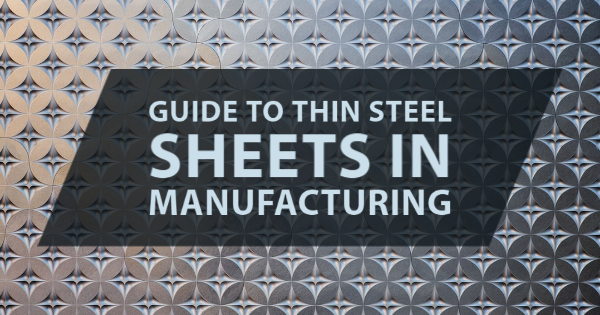Guide to Thin Steel Sheets in Manufacturing

Thin sheet metal is the basis for many engineering projects. Thin metal strips are used in cars, furniture, and electronics. Its use accounts for approximately $30 billion in revenue across the country. Here is a guide to the use of thin steel sheets in the engineering and manufacturing process.
What is Sheet Metal?
Sheet metal comes in many forms and shapes and consists of any metal with a thickness between 0.5 to six millimeters. In engineering and manufacturing, thickness for a thin steel sheet can also be measured by gauges. A gauge measures the metal’s thickness by its relation to its weight per square foot. The higher the gauge number, the thinner the metal is. The thickness for the same gauge can be different for various metals such as aluminum and stainless steel.
Common Materials
There are various metals that can be used for engineering in the form of sheets. The metal you choose depends on your product’s requirements and application. A thin steel sheet has high durability and tensile strength. Copper and brass are typically used as decorative layers.
Sheet Metal Production Process
Hot rolling and cold rolling are the two ways that sheet metal is produced. Cold rolling typically only produces sheet metal for construction steels up to three millimeters in thickness. Hot rolling is used for greater thicknesses because it’s more cost-efficient.
When it comes to engineering projects, cold-rolled steels are more preferred for precision applications. This is because it gives engineers greater control over the final dimensions. With hot-rolled steels, the metal can shrink slightly and change its shape after cooling.
Sheet Metal Forming Processes
The choice of forming process for sheet metal you choose will depend on the cost, metal availability, and your desired outcome. Sheet metal bending applies stress to the metal to end until plastic deformation is reached. This prevents the thin metal sheet from returning to its former shape. Sheet metal curling creates a circular ring at the edge of the sheet metal for safer handling. Camber is removed from sheet metal through the process of decambering.
In deep drawing, the shape of the sheet metal is molded using a series of dies in multiple stages. The sheet can be converted into various shapes such as automobile parts, sinks, and fuel tanks during large batch productions. Sheet metal expanding is commonly used to create a self-draining product such as catwalks, platforms, and fences. These are just a few of the many various sheet metal forming processes that can be used for manufacturing and engineering projects.
The possibilities are endless for the use of thin metal sheets in the manufacturing process. Thin steel sheets offer the greatest durability and strength for any project. For more information on thin metal sheets for your production process, contact Thin Metal Sales today.


